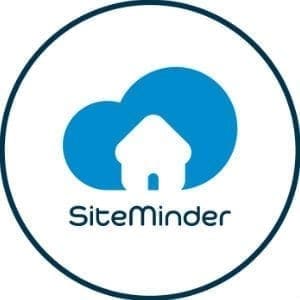 The past year raised many discussions in the revenue management domain.
The past year raised many discussions in the revenue management domain.
We began to question the importance and relevance of historical data. People started taking a closer look at the true value of human experience and knowledge. And, of course, revenue professionals’ trust in their automated revenue management systems (RMS) was put to the test.
The latter showed great results for many hotels. But you may still wonder: is automation in revenue management really the way to go for my hotel?
What automation in revenue management shouldn’t look like
Many revenue managers feel like an automated RMS can’t handle these unprecedented times. They distrust automation and feel that they know better. After all, they have many years of experience in their field.
This skepticism has two main reasons. First, automated RMS are still relatively new. Therefore, you may not have seen sufficient evidence of the systems’ capabilities to build your trust in them. It’s the same with driverless cars. Many of us are skeptical of them because we haven’t seen them in action often enough. But that doesn’t mean they don’t work.
Second, many revenue professionals think automation means that everything runs on autopilot and they have no control or oversight over pricing anymore. In the worst case, this could result in the system outpricing the hotel or slashing rates and upsetting the property’s positioning. As a result, bookings and revenue are lost – not something you can afford right now.
Luckily, you always have full control over your RMS and never have to fly blind. You can adjust all settings as needed and step in to make manual changes at any time.
Where to leverage automation in revenue management to save time and drive revenue
Let’s look at the areas where you’ll benefit from automation and how to make the most of it.
Business intelligence
It’s especially important to get this right in these unprecedented times where historical data and past insights have become unreliable.
Yes, you can gather business intelligence by manually collecting data. You’ll probably agree though that things like a daily in-depth competitor and market analysis are tedious and time-consuming. On top of that, your information is usually outdated by the time you use it to make decisions.
Some data can be hard to find through manual research as well. Think of forward-looking demand data or real-time shifts in search volume for your destination, for example. This means you’re left with an incomplete picture to base your revenue management strategies and tactics on.
Automated data collection solves this problem and saves you hours of valuable time. Let your system do the heavy lifting and access all the data you need in just a few clicks. This includes on-the-books and historical data, and, most importantly, live forward-looking demand insights, market evolution and competitor information. Rest assured that this approach always supplies the most accurate, up-to-date figures in record speed. Use the time you save to analyze your data, make informed decisions, and refine your strategy to reflect recent developments.
Pricing
Manual pricing updates based on historical data and experience can work fine in normal times. However, even there you risk losing out on business if you miss trends or surprise events crop up (like this Ed Sheeran concert).
Stay ahead of the game by automating your rate updates. You’ll get the best results by using an RMS that factors in the following aspects:
- Live competitor data: this includes pricing and length of stay restrictions, among other things
- Real-time forward-looking demand data: think search volume for your destination and flight searches, for example
- Upcoming events in your area: cultural or political events, public and school holidays play a role here
- Past and recent trends: monitoring annual travel seasons were important in the past. Today, you need to detect demand surges due to shifting travel restrictions
The key is an RMS that gathers live data and runs thousands of demand simulations in the blink of an eye. This allows your system to determine the optimal room rates for the current circumstances in real time. Think of the data as the fuel and demand modeling as the engine that drives performance by optimizing your rates. The advantage is the more you let this engine run, the more the machine learning capability will improve pricing recommendations.
Let your RMS take charge and make price updates. Then you can always take advantage of the latest developments and stay in line with shifting demand. If you want to monitor your system closely, enable notifications for suggested rate updates. Then you can approve or reject the changes. Always keep an eye on your RMS though, so you can step in and change rates or settings when needed.
Forecasting
Today, demand can change at a moment’s notice. Governments update restrictions without warning and demand reacts immediately. The best example of this is when the UK’s Prime Minister announced Britain’s steps out of lockdown in February 2021. Several holiday firms immediately saw massive spikes in bookings.
On top of ensuring your pricing keeps pace with demand, you need to update your forecasts regularly to reflect market changes. Going through the whole process manually every time costs valuable time which you could be spending on other tasks.
Instead, let your system create the forecast for you, then tweak it, as necessary. As with automated pricing, your RMS leverages the power of live data and demand modeling when predicting future business. Having these accurate forecasts on hand will allow you to better plan ahead and share realistic outlooks with stakeholders.
It might feel like a stretch to suggest you test and adopt new technology in these trying times. But there’s no better time to embrace technology that’ll get you ahead of your competition and help you navigate today’s turbulences.
Yes, full automation in revenue management used to be a maverick approach. However, now it’s a ticket to making the most of recovery from the get-go and leaving the crisis behind.






























